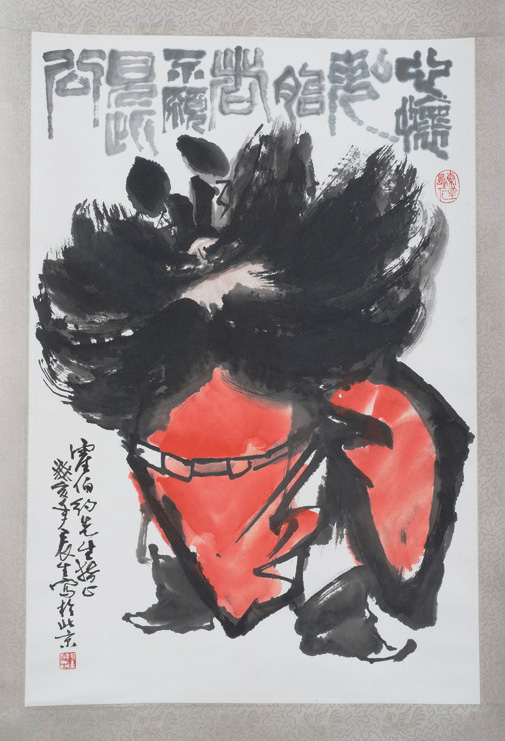- Vol. 06
- Chapter 02

GENEROUS RED ANIMALS COME IN FROM THE COLD
The kids decided on the title.
A radish was feeling spicy. A ladybug with her hair in two black pigtail antennae cuddled a red pompom A six-year-old Viking from East Ham had his beard on upside down so that it grew up from the neck in a vulture-like ruff of black hair.
He yelled kind words in an angry way, 'There is room for everyone!'
They had decided to all wear red because it was a 'festive' colour which ten-year-old Naomi (the radish) said was a value she wanted to preserve, but their choice of character was personal. The children had been put in charge of the slot formerly reserved for the nativity play. The first story idea involved every character having no head.
Angie, a contract artist facilitator, suggested that may not go along with a festive theme. 'But it’s not violent, we just have no heads!' yelled Theo, pulling his shirt up over his head and banging into desks to demonstrate.
One seven-year-old decided that her character would be a period—menstruation personified—and circumvented the interdiction against headlessness by wearing a red sheet over her head with eye holes, which raised other questions.
It wasn’t Angie’s job to censor. As a young girl, she had played the donkey and though, if you asked, she would say she had rejected religion because of entrenched colonial and homophobic aspects, her donkey days played no small part.
GENEROUS RED ANIMALS COME IN FROM THE COLD
Little white Mary, her braces affixed to her teeth with bits of pink and blue candy-like plastic, received gifts from the wise men at recess and gave them kisses in return—frozen metal wires electrifying warm lips that had no wisdom to offer. No one noticed the brown donkey in the corner.
On December 15th, the parents showed up. All the red characters were in a desert. It was very cold, an ice desert. An eight-year-old red telephone booth announced this information ('What can you show us rather than tell us?' Angie had asked) 'What do we do about all these stray cats?' the Period yelled as she made a bold offer and threw red pompom balls around the space, an instruction in metaphor.
The kids debated: Some of these cats are nice, some are not.
Is having room just a state of mind? Do we eat them or put them out of their misery in a sack in a pool of water? (This child, an elf, then went and stood in the corner out of shame.) Maybe they are not miserable but just alive. We can make space.
They all squished in a small clump. Angie did not know that the phone booth would bring an actual cat. It wandered the expanse of the stage in a Santa hat, mewling, and batted at its own representation. The kids stayed huddled, fidgeting, waiting as quietly as they could for clapping to release them from their generous red work.
